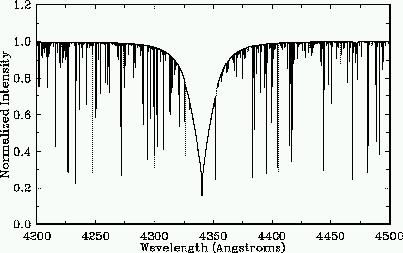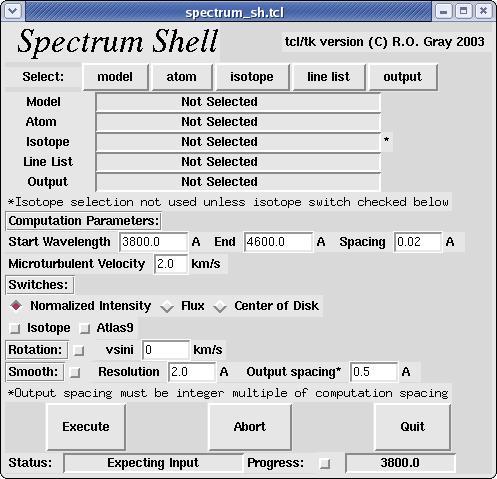

A stellar spectral synthesis program
Version : 2.65
Author(s) : Richard O. Gray
License : Free
Website : http://www1.appstate.edu/dept/physics/spectrum/spectrum.html
Installs from Open Source Astronomy for Linux cd 3
Disk space required for installation is 2.93 Mb
After the package is installed it can be accessed using the command
/opt/astro/bin/startspectrum


SPECTRUM can be programmed with "command-line switches" to give a number of different outputs. In the default mode, SPECTRUM computes the stellar-disk-integrated normalized-intensity spectrum, but in addition, SPECTRUM will compute the absolute monochromatic flux from the stellar atmosphere or the specific intensity from any point on the stellar surface.
SPECTRUM and a number of auxiliary programs can be run under batch mode, making automated computation of a large number of synthetic spectra possible.
SPECTRUM is distributed with an atomic and molecular line list for the optical spectral region 3000 A to 6800 A, called luke.lst, suitable for computing synthetic spectra with temperatures between about 4500K and 20,000K.
SPECTRUM currently supports most atomic elements important in stellar spectra and their first or second ions. SPECTRUM also supports the following diatomic molecules: CH, NH, OH, MgH, SiH, CaH, SiO, C2, CN, CO and TiO. Other molecules and atoms will be added in the future.